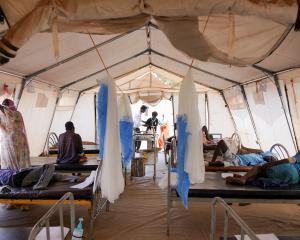Two months ago, the United States Department of Agriculture forecast the biggest maize (corn) harvest in history: 376 million tonnes.
After two months of record heat and drought in the US Midwest, it has dropped its forecast to 274 million tonnes.
So, by early July, it was predicting that the price per bushel of maize would exceed $8 for the first time in history, and it's now forecasting $8.90.
The heat wave in Russia, while nowhere near as bad as the one in 2010, is also cutting deeply into Russian wheat production.
There will still be enough for domestic consumption, but Andrei Sisov, of the Moscow-based farming consultancy SovEcon, said last week that he expected Russian wheat exports to drop from 28 million tonnes to only 13 million.
For this and other weather-related reasons, wheat prices are on their way up too.
High wheat prices hit human consumers directly, but high maize prices hit even harder in the long run because huge amounts of maize are used to feed animals and provide oil for processed foods.
World food prices in general are on the way back up, and it's beginning to look like a pattern, not a series of accidents.
The last big price spike, in 2007-09, had a huge impact in developing countries, where many people spend about 40% of their income on food (compared with only about 10% in developed countries).
If you're already spending almost half your income on food and the price soars, you just have to give your children less food - which is why some people see the revolutions of the "Arab Spring" as delayed reactions to the last spike.
Meanwhile, on a different planet entirely, the McKinsey Global Institute, the business and research arm of management consultancy McKinsey and Company, published another report in June.
It's the latest in an endless series of ever-bolder estimates by various "global institutes" of how fast the demand for goods and services is growing around the world.
The themes of McKinsey's new report, Urban World: Cities and the Rise of the Consuming Class, are familiar enough.
The world's economic centre of gravity is moving to Asia; huge numbers of new "consumers" - people with average annual incomes over $3600 who buy more than just food and basic shelter - will be joining the global market by 2025; there are wonderful opportunities out there for clever investors.
The only new wrinkle in this document is the bit about how 65% of "global growth" to 2025 will happen in the "City 600", as they call it: the world's 600 biggest cities.
And what McKinsey calls "the Emerging 440 cities" - those among the 600 that are in the rapidly developing countries - will account for almost half of the total growth in world demand to 2025.
Then come the numbers. As the emerging economies grow, they'll all start buying fridges and baby food and, eventually, cars.
Whoopee! We'll all get rich selling things to the Chinese!
But nowhere in the report does McKinsey deal seriously with the impact of a predicted total of 2.6 billion consumers, up from only 0.8 billion now, on world demand for food.
Yet meat consumption soars as incomes rise.
Feeding animals to produce meat puts huge pressure on grain resources, so all food prices rise, for rich and poor alike.
Combine the rise in meat consumption with an extra billion people and severe constraints of food production, most of them related to climate change, and world food prices in 2025 could be two to three times higher in real terms than they are now.
That means that the poorest starve, and that a lot of McKinsey's promised new "consumers" - those who can spend on other things than sheer survival - don't make it into the middle class after all.
The same rationing by price is likely to apply to everything else that matters. Indeed, the prices of energy and raw materials, which fell consistently through most of the 20th century, are already back up to where they were in real terms a century ago.
There are not going to be 1.8 billion new consumers in 13 years' time, and the poor will be more desperate than ever, and political stability in many developing countries will be just a memory.
The demands of consumers, like the sheer number of human beings, can in theory expand indefinitely, but on a finite planet with dwindling resources and a changing climate the cost of meeting consumer demand is going to go up very steeply.
It is probably going to get very ugly out there.
And as for China, the poster child for miraculously fast economic growth - well, China has one-seventh as much water and one-tenth as much arable land per capita as North America. When things get tough, that is going to matter a lot.
Gwynne Dyer is an independent London journalist.












